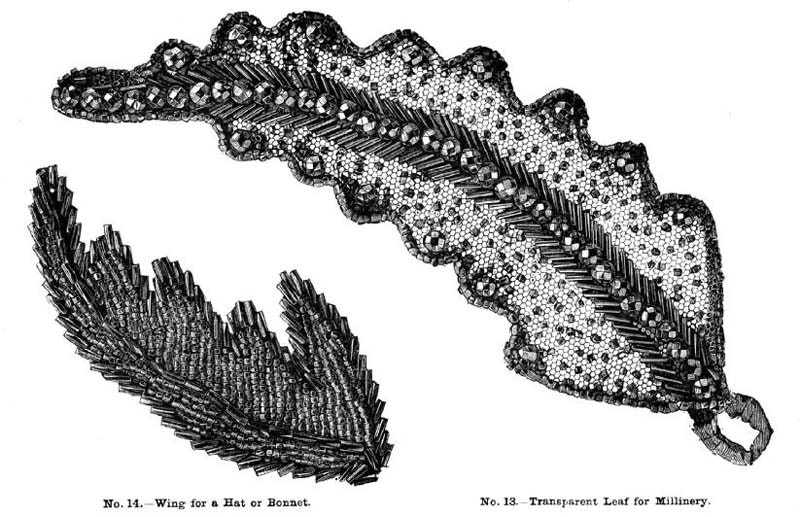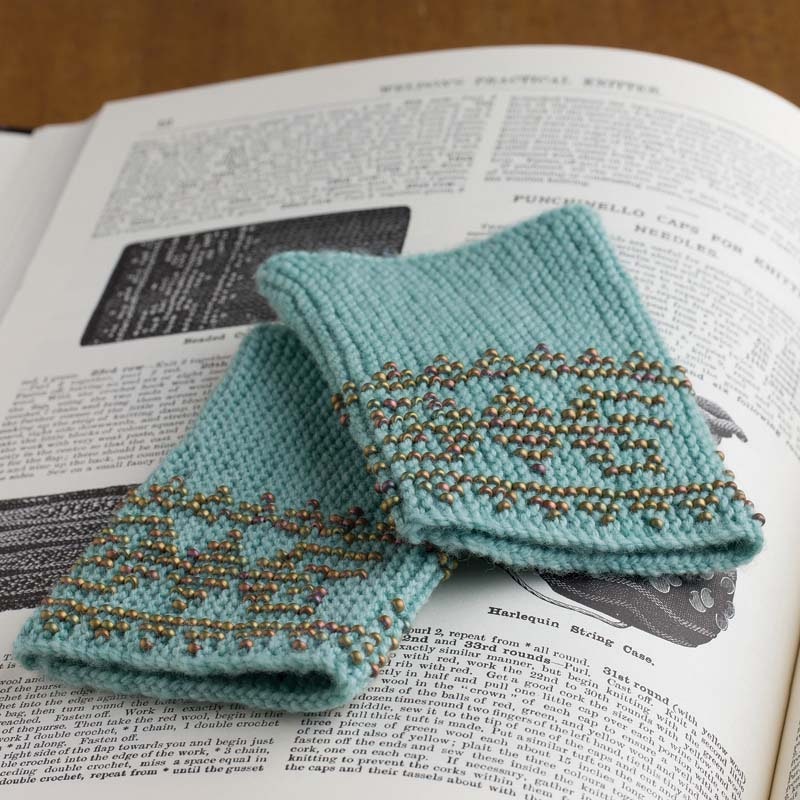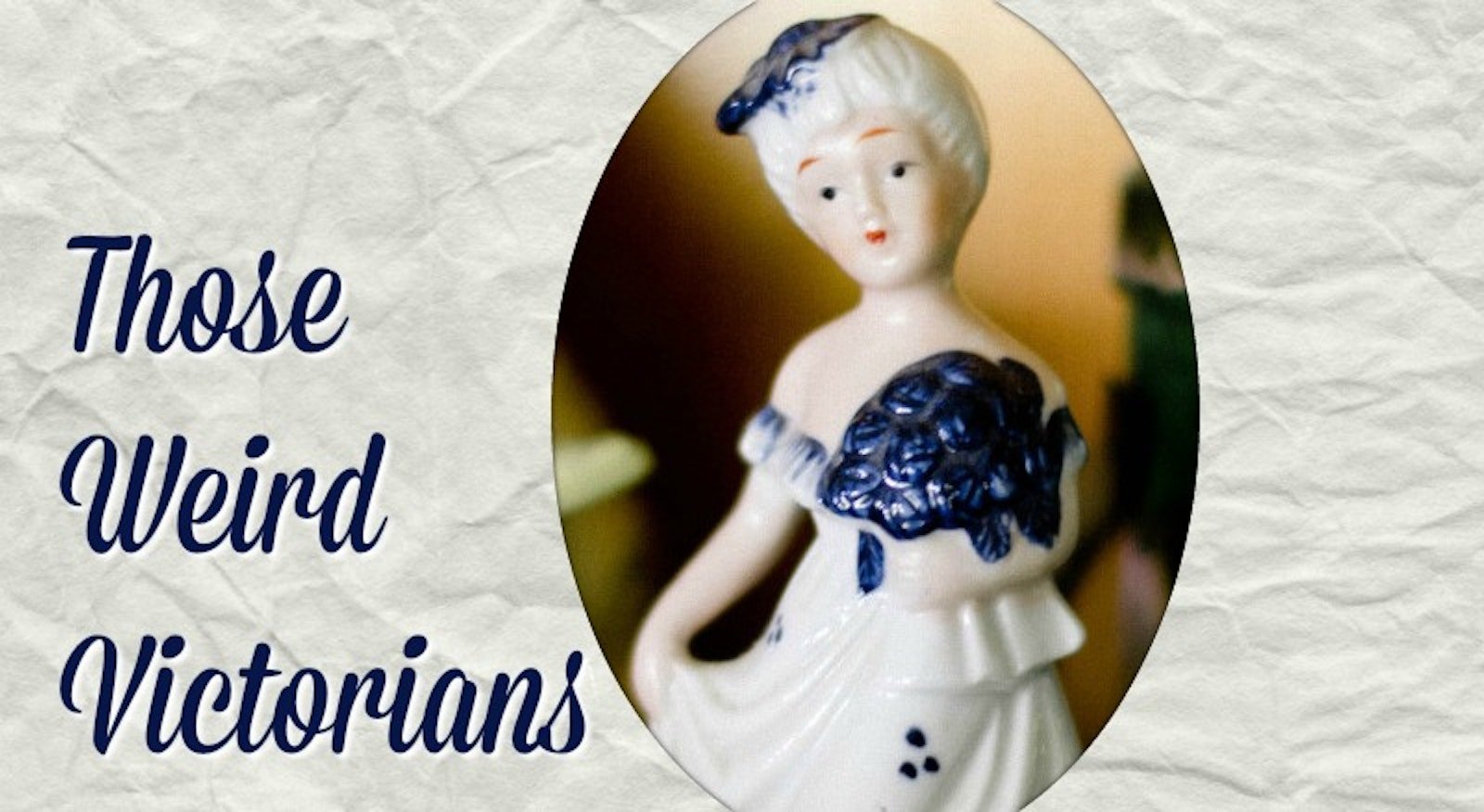For our weekly foray into the needlework world of “Those Weird Victorians,” file this installment in the not-remotely-weird category. The Victorian’s frequently embellished and adorned their clothing with beadwork. If the television show Portlandia had been around in the late 1800s, there surely would have been a sketch entitled “Put a Bead on It.”

No. 14 Wing for a Hat Bonnet and No. 13 Transparent Leaf for Millinery from Weldon’s Practical Bead-Work, First Series.
Weldon’s Practical Bead-Work, First Series opens by stating, “Now that the mania for using beads in such incalculable quantities on ladies’ outdoor and indoor clothes shows no sign of abatement, and bids fair to continue for some time yet to come, ladies are beginning to devote their spare time to the ornamentation of panels, tabliers, waistcoats, cuffs, and collars for their dresses to suit their own fancy, and in colours corresponding with those of any particular gown.”
Weldon’s Practical Bead-Work contains general instructions for beaded trims and adornments for the everyday and special occasions alike, plus advice for choosing the right needles, string, and bead color combinations. A practical Victorian could find a myriad of uses for the beadwork embellishments contained within.

Carol Huebscher Rhoades adapted the 1896 Beaded Cuffs to Knit from Weldon’s Practical Needlework, Thirty-First Series. Photo by Joe Coca.
Think the Victorian’s penchant for beadwork is too old-fashioned for today’s fashionista—not a chance! Carol Huebscher Rhoades adapted the chic 1896 Beaded Cuffs to Knit from Weldon’s Practical Needlework, Thirty-First Series. Featured on the cover of the July/August 2013 issue of PieceWork and knit in a modern hand-dyed wool fingering-weight yarn, these contemporary wristers serve double duty, not only are they a stylish accessory, but they help keep you warm, too. Endless are the bead and yarn color combinations available to the modern-day knitter—at the end of an Internet connection.
Those crafty Victorians made due without the aid of YouTube, Pinterest, or Ravelry. Yet with the guidance of Weldon’s, they were able to create and embellish with abandon. Who knew? Victorian’s were D.I.Y. before the term was coined.*
—Elizabeth
* According to Merriam-Webster’s online dictionary, the year of first use was 1955.

